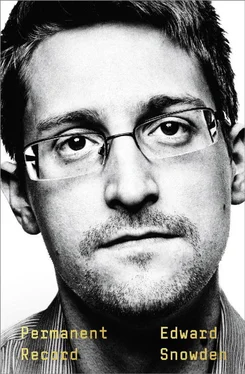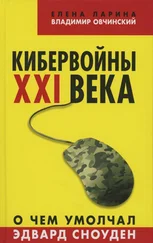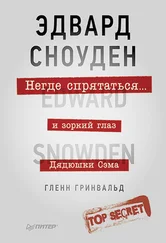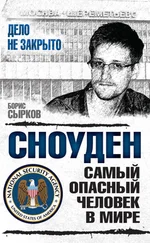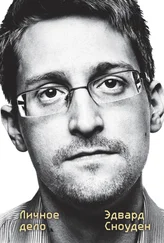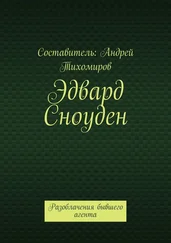It was only once I got home that I was able to relax, even just slightly. I was still worried about the house being wired—that was another one of those charming methods the FBI used against those it suspected of inadequate loyalty. I’d rebuff Lindsay’s concerns about my insomniac ways until she hated me and I hated myself. She’d go to bed and I’d go to the couch, hiding with my laptop under a blanket like a child because cotton beats cameras. With the threat of immediate arrest out of the way, I could focus on transferring the files to a larger external storage device via my laptop—only somebody who didn’t understand technology very well would think I’d keep them on the laptop forever—and locking them down under multiple layers of encryption algorithms using differing implementations, so that even if one failed the others would keep them safe.
I’d been careful not to leave any traces at my work, and I took care that my encryption left no traces of the documents at home. Still, I knew the documents could lead back to me once I’d sent them to the journalists and they’d been decrypted. Any investigator looking at which agency employees had accessed, or could access, all these materials would come up with a list with probably only a single name on it: mine. I could provide the journalists with fewer materials, of course, but then they wouldn’t be able to most effectively do their work. Ultimately, I had to contend with the fact that even one briefing slide or PDF left me vulnerable, because all digital files contain metadata, invisible tags that can be used to identify their origins.
I struggled with how to handle this metadata situation. I worried that if I didn’t strip the identifying information from the documents, they might incriminate me the moment the journalists decrypted and opened them. But I also worried that by thoroughly stripping the metadata, I risked altering the files—if they were changed in any way, that could cast doubt on their authenticity. Which was more important: personal safety, or the public good? It might sound like an easy choice, but it took me quite a while to bite the bullet. I owned the risk, and left the metadata intact.
Part of what convinced me was my fear that even if I had stripped away the metadata I knew about, there could be other digital watermarks I wasn’t aware of and couldn’t scan for. Another part had to do with the difficulty of scrubbing single-user documents. A single-user document is a document marked with a user-specific code, so that if any publication’s editorial staff decided to run it by the government, the government would know its source. Sometimes the unique identifier was hidden in the date and time-stamp coding, sometimes it involved the pattern of microdots in a graphic or logo. But it might also be embedded in something, in some way, I hadn’t even thought of. This phenomenon should have discouraged me, but instead it emboldened me. The technological difficulty forced me, for the first time, to confront the prospect of discarding my lifetime practice of anonymity and coming forward to identify myself as the source. I would embrace my principles by signing my name to them and let myself be condemned.
Altogether, the documents I selected fit on a single drive, which I left out in the open on my desk at home. I knew that the materials were just as secure now as they had ever been at the office. Actually, they were more secure, thanks to multiple levels and methods of encryption. That’s the incomparable beauty of the cryptological art. A little bit of math can accomplish what all the guns and barbed wire can’t: a little bit of math can keep a secret.
Most people who use computers, and that includes members of the Fourth Estate, think there’s a fourth basic permission besides Read, Write, and Execute, called “Delete.”
Delete is everywhere on the user side of computing. It’s in the hardware as a key on the keyboard, and it’s in the software as an option that can be chosen from a drop-down menu. There’s a certain finality that comes with choosing Delete, and a certain sense of responsibility. Sometimes a box even pops up to double-check: “Are you sure?” If the computer is second-guessing you by requiring confirmation—click “Yes”—it makes sense that Delete would be a consequential, perhaps even the ultimate decision.
Undoubtedly, that’s true in the world outside of computing, where the powers of deletion have historically been vast. Even so, as countless despots have been reminded, to truly get rid of a document you can’t just destroy every copy of it. You also have to destroy every memory of it, which is to say you have to destroy all the people who remember it, along with every copy of all the other documents that mention it and all the people who remember all those other documents. And then, maybe, just maybe, it’s gone.
Delete functions appeared from the very start of digital computing. Engineers understood that in a world of effectively unlimited options, some choices would inevitably turn out to be mistakes. Users, regardless of whether or not they were really in control at the technical level, had to feel in control, especially with regard to anything that they themselves had created. If they made a file, they should be able to unmake it at will. The ability to destroy what they created and start over afresh was a primary function that imparted a sense of agency to the user, despite the fact that they might be dependent on proprietary hardware they couldn’t repair and software they couldn’t modify, and bound by the rules of third-party platforms.
Think about the reasons that you yourself press Delete. On your personal computer, you might want to get rid of some document you screwed up, or some file you downloaded but no longer need—or some file you don’t want anyone to know you ever needed. On your email, you might delete an email from a former lover that you don’t want to remember or don’t want your spouse to find, or an RSVP for that protest you went to. On your phone, you might delete the history of everywhere that phone has traveled, or some of the pictures, videos, and private records it automatically uploaded to the cloud. In every instance, you delete, and the thing—the file—appears to be gone.
The truth, though, is that deletion has never existed technologically in the way that we conceive of it. Deletion is just a ruse, a figment, a public fiction, a not-quite-noble lie that computing tells you to reassure you and give you comfort. Although the deleted file disappears from view, it is rarely gone. In technical terms, deletion is really just a form of the middle permission, a kind of Write. Normally, when you press Delete for one of your files, its data—which has been stashed deep down on a disk somewhere—is not actually touched. Efficient modern operating systems are not designed to go all the way into the bowels of a disk purely for the purposes of erasure. Instead, only the computer’s map of where each file is stored—a map called the “file table”—is rewritten to say “I’m no longer using this space for anything important.” What this means is that, like a neglected book in a vast library, the supposedly erased file can still be read by anyone who looks hard enough for it. If you only erase the reference to it, the book itself still remains.
This can be confirmed through experience, actually. Next time you copy a file, ask yourself why it takes so long when compared with the instantaneous act of deletion. The answer is that deletion doesn’t really do anything to a file besides conceal it. Put simply, computers were not designed to correct mistakes, but to hide them—and to hide them only from those parties who don’t know where to look.
* * *
THE WANING DAYS of 2012 brought grim news: the few remaining legal protections that prohibited mass surveillance by some of the most prominent members of the Five Eyes network were being dismantled. The governments of both Australia and the UK were proposing legislation for the mandatory recording of telephony and Internet metadata. This was the first time that notionally democratic governments publicly avowed the ambition to establish a sort of surveillance time machine, which would enable them to technologically rewind the events of any person’s life for a period going back months and even years. These attempts definitively marked, to my mind at least, the so-called Western world’s transformation from the creator and defender of the free Internet to its opponent and prospective destroyer. Though these laws were justified as public safety measures, they represented such a breathtaking intrusion into the daily lives of the innocent that they terrified—quite rightly—even the citizens of other countries who didn’t think themselves affected (perhaps because their own governments chose to surveil them in secret).
Читать дальше
